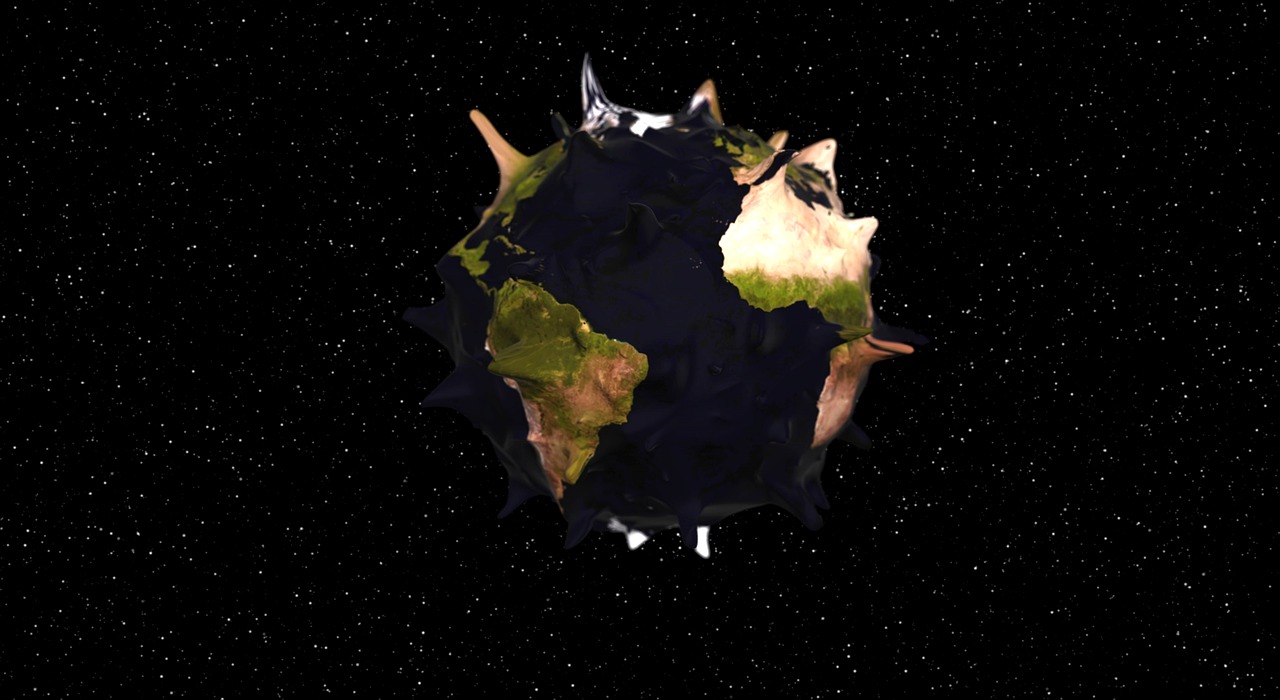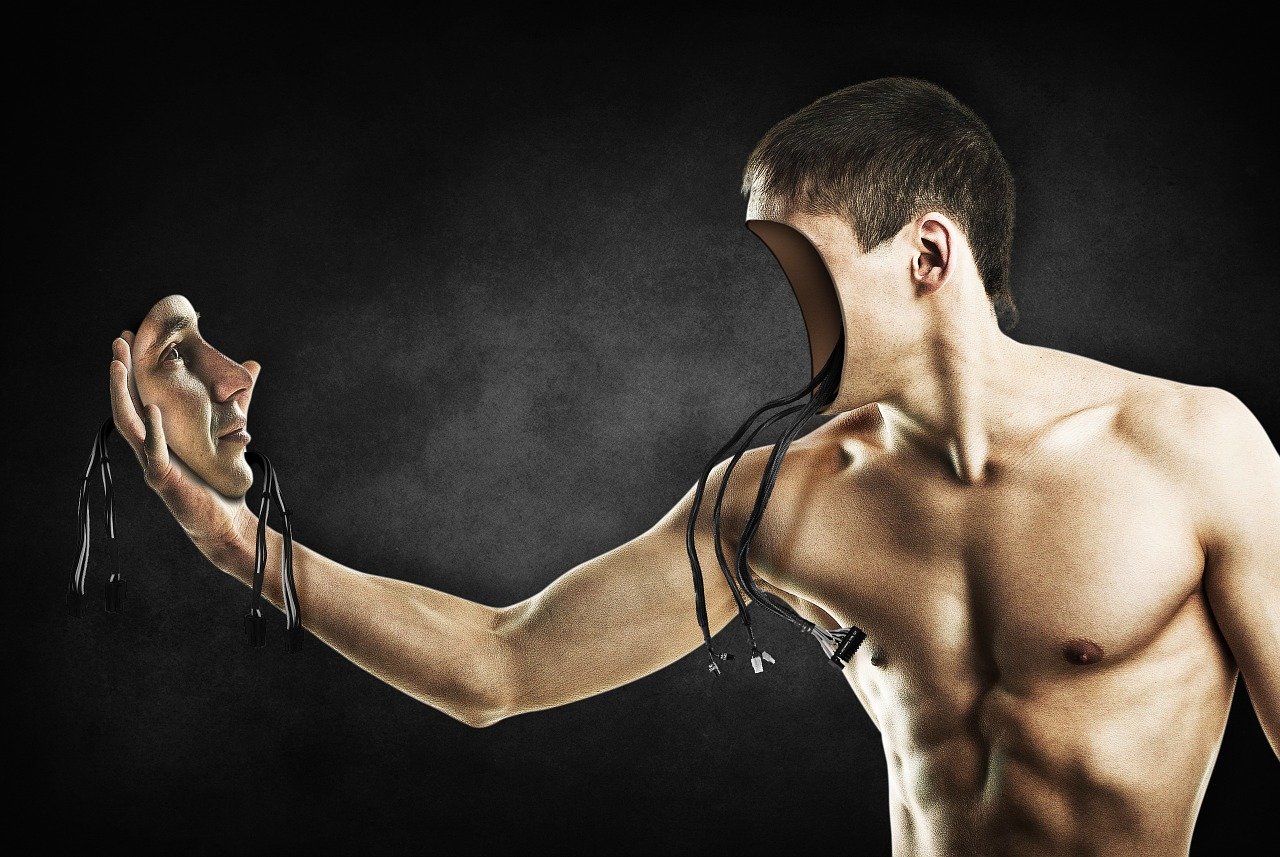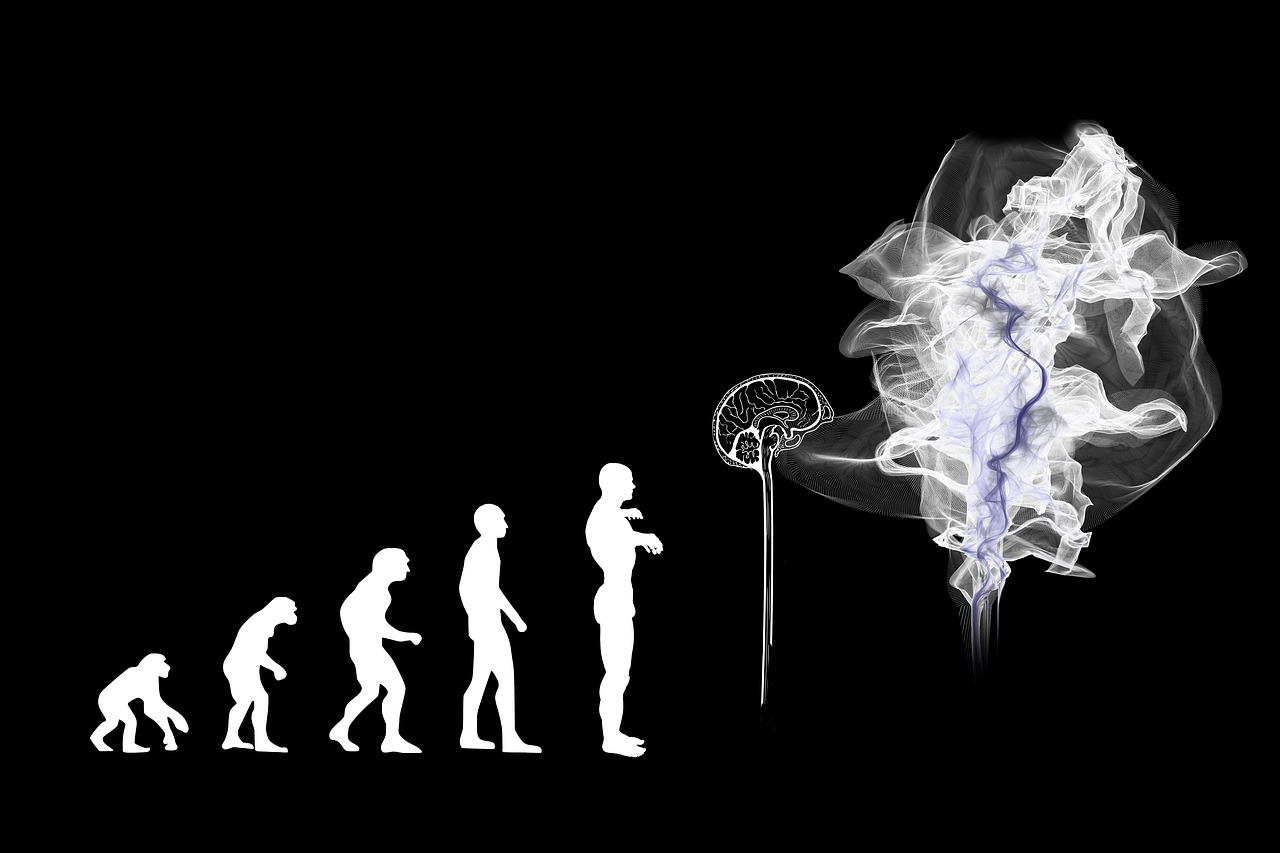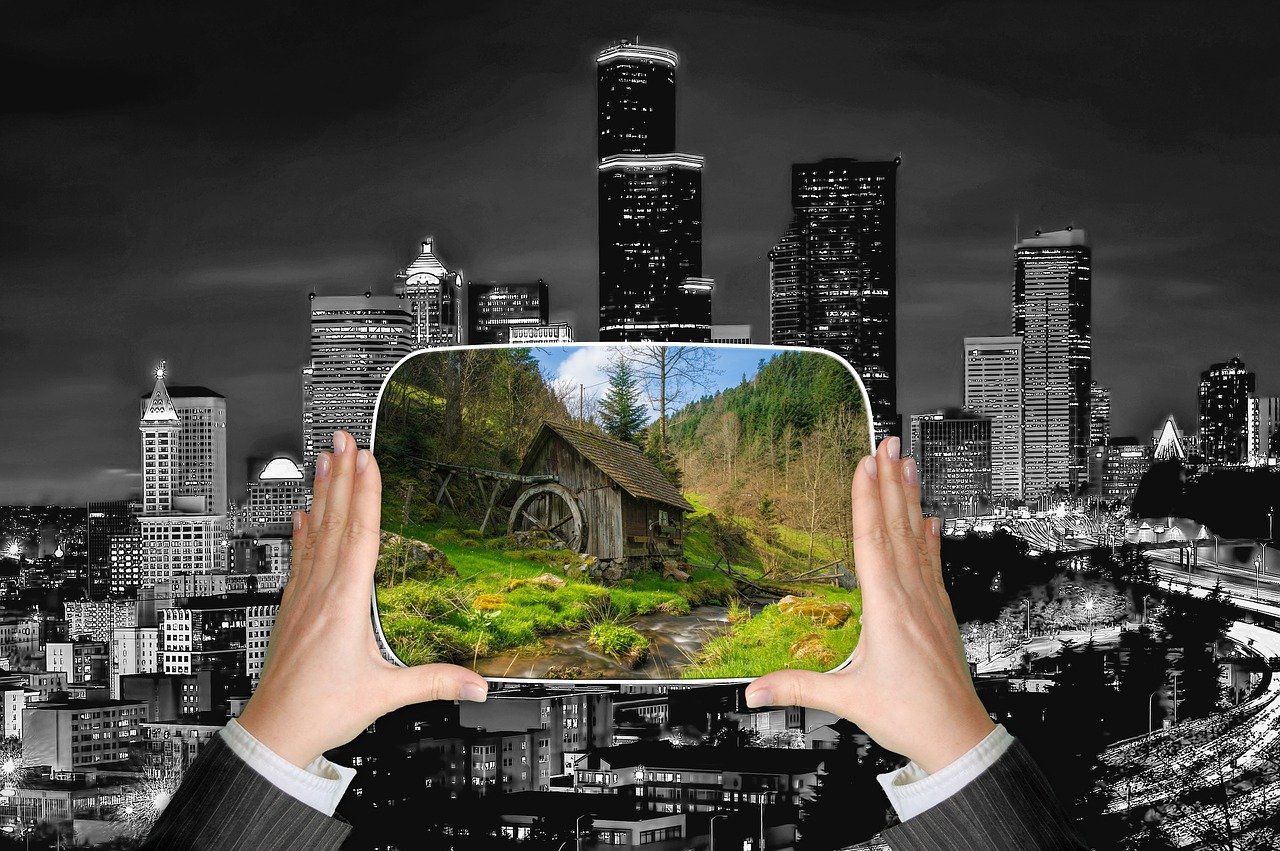Author: admin
10-step program for a sick planet
Good evening, Ladies and Gentlemen Let me first say that it is an honor to speak here to you on the 10th anniversary of the Club of Amsterdam. Creating an unrestricted and free thinking environment that is strictly focused on envisioning the future, whatever such future may be, was the concept of Felix Bopp.
Club of Amsterdam Journal, June / July 2013, Issue 159
Content Club of Amsterdam – the next level – the story Chronicle and Reflexions of the Women in the World Summit Experience in New YorkClub of Amsterdam blogNews about the Future Time RebornRecommended Book: Who Owns the Future? Sustainable connected cities Futurist Portrait: John L. Petersen Agenda Special supporters Club of Amsterdam SearchSubmit your articleContactSubscribe Welcome to the Club of Amsterdam Journal. The Club of Amsterdam needs your support for the next level: Connecting globally! Please share your ideas – send an email about new topics for events, speaker recommendations, interesting articles, general comments etc.! Felix F Bopp, Founder & Chairman Club of Amsterdam – the next level – the story by Felix F Bopp, Founder & Chairman According to an old story, a lord of ancient China once asked his physician, a member of a family of healers, which of them is the most skilled in the art. The physician, whose reputation was such, that his name became synonymous with medical science in China, replied: “My eldest brother sees the spirit of sickness and removes it before it takes shape, so his name does not go out of the house.” “My elder brother cures sickness when it is still extremely minute, so his name does not get out of the neighbourhood.” “As for me, I puncture veins, prescribe potions, and massage skin, so from time to time my name gets out and is heard among the lords.” As in the story of the ancient healers, in Sun Tzu’s philosophy about the art of war the peak efficiency of knowledge and structure is to make conflict altogether unnecessary. (Source: Sun Tzu: The Art of War – translated by Thomas Cleary) Dealing with the future can be described in a similar fashion – the Club of Amsterdam facilitates knowledge driven dialogues that can initiate, challenge and strategise preferred futures. What are the ingredients that prepare better for the future and allow to influence and create it?Profound exchange of ideas about our origin, about life, mankind’s role on this planet form the basics of a dialogue between Thought Leaders, specialists, generalists and everybody interested. This dialogue about preferred futures embraces all aspects of life, includes diverse cultures, age groups and educational backgrounds, is multi-disciplinary and is independent from religious and political believe. There are several hidden treasures that – even though mostly known in parts – are rarely implemented in full. We are at the beginning of discovering the collective power of minds – strong knowledge, combined with solutions that dare tackle issues in a larger and global context – guided by science, business and political leadership as well as spirituality, ethics, values and by bringing together people from all angles of the planet and cultural background – those that are willing to share for a meaningful future. Connecting globally! Chronicle and Reflexions of the Women in the World Summit Experience in New York By Rosana Agudo. Founder of the NGOs Lur Gozoa and MirraSpring 2013 For some time now, in my presentations and in some of my articles, I have been signaling important points for perceiving and responding to situations that are shaking the world -situations that are causing every society in every country to tremble, be they developed or not, be they at war (sometimes permanently) or in peace (perhaps only apparently). In every case, the victims are key elements, and should form part of the solution. And the victims we are talking about here are victims twice over, because they are not allowed a seat at the tables where discussions and negotiations take place. I am talking about women and children. Hillary Clinton, in the splendid speech she gave in the Women in the World Summit in NYC, 5.4.13, emphasized: “World issues are women’s issues. Human rights are women’s rights. Women are not victims but agents of change. When women participate in the economy, everything goes better… Women are part of the revolution and cannot be denied a place at the negotiating table. We are in a moment of convergence. Men are at war but women all over the world, including those from warring countries, are talking to each other. We are maintaining a dialog.” A few years back, during another visit to New York for another great gathering of women of the world (the Global NGO Forum for Women, Beijing + 15),I visited the United Nations and I had a photo of myself taken next to the UN Millennium Development Goals: During the following years, I have presented this photograph in every meeting, speech and presentation that I have participated in and I always ask the same question to those present, the same question I asked myself when I took the photo and that I ask myself whenever I see it: ¿How do we suppose to achieve these goals without women being able to participate actively at the decision making tables? 1. End poverty and hunger2. Education for all3. Equality for women4. Save children’s lives5. Make motherhood safe6. Stop HIV/AIDS, malaria and other diseases7. Protect the environment8. Build a global partnership for development. Considering the order in which the different objectives are listed, there is no doubt that they were written down and decided upon at a table in which the feminine voice was either present but not taken into consideration or wasn’t there at all. The integrated, global vision required to commit to these goals is nonexistent. They seem to be independent and disconnected one from the other, as though they could be treated in a linear fashion.What we need to affront these challenges is a global strategy, an integral vision and great discerning perception, fruit of our trained attention. We also need great courage to comprehend the sheer magnitude of the task ahead. The next evolutionary step is for us to set off on the path of change in our mental model that will secure the intelligent critical mass needed to put things in order and begin to give form to this new society that cares for its surroundings. We must do this not only to insure our own survival on the planet with its resources, but also to care properly for all life that shares in the inheritance under our stewardship. We expect exceptional capabilities of our leaders or, if not, the intelligence necessary to let themselves be guided or to invite dialog with those who can supply the ingredients, solutions or nuances necessary to create those threads that will unite and give shape to realities when we want to weave them together in a global fashion. As Hillary Clinton said in her speech and as I have been able to confirm and transmit many times, whether our countries are at war, or not, whether we are”friends” or “enemies”, we women talk among ourselves, we listen, we empathize, and we cry for our sons and daughters. We feel deeply the cries of the child in pain and the cries of the child with nothing to eat. Any child is our child when we see him or her suffer, when we see him or her deprived of affection…. We feel the humiliation and the pain of those thousands of women who are raped each day because they live in a “culture of rape” that knows no bounds; we feel the frustration, the hate, the rage towards our sex -and the indifference. We feel the pain of the earth because our bodies are being used as the battlefields of so many, many wars…. in so many, many ways… In this sense, the care of women would be the inarguable basis for the care of children. But in societies in which women are only valued as payment of the family debt, for example, in which their lives have no value whatsoever, in which women have the same status as animals, and are treated as such, the idea of caring for women is a hopeless task. In Africa alone, more than 17 million orphans exist, just barely surviving, because their mothers, more often than not children themselves, have not survived childbirth, anemia, infections, hemorrhages, starvation, HIV/AIDS… How can we expect to save the lives of so many children if we don’t care for their mothers, who so often give birth as a consequence of rape but, in spite of that, love and want to care for their innocent children?! How is one to demand “education for all – including girls” (my addition, of course) as an objective for women’s equality when women-girls are shot at point blank rage when they go to school, just because the men (and this writer heard it straight from the source) believe that “…when women go to school, we lose our authority; the best thing for women who want to study is the bullet.”?! When the valiant woman-girl, who made the video-recorded interview shown during the Summit, was asked how she was able to listen to these words and remain calm; she responded that at that moment she was thinking: “One day these men will be working for me.” She was able to acknowledge the ignorance and fear of those men as well as the power of education, she didn’t think of vengeance but instead, showed the grandeur of her humanity. Malala Yousafzai, the Pakistani girl who was shot at point blank range in her school bus assured us that for every Malala shot, ten more Malalas rise up, eager to go to school. More importantly, I read in the news today that Malala has begun her mission to secure access to education for every Pakistani girl. All girls in Pakistan want to emulate Malala and stand like rocks against all resistance. Swat girls vow to continue Malala’s mission Women from these lands must also be educated such that they comprehend that there is another way of doing things and of understanding things and that they begin to respect themselves. This work is also being realized; groups of women meet to talk and to inform and to give each other courage. In this sense, the leadership that these very young women are exercising is worthy of our respect and admiration for their courage, the force of their convictions and their sense of justice and compassion. As I have been saying and as we have been confirming time and time again, it is useless to limit ourselves to clamor for women’s rights. We must engage men, open up their mental model; they are the ones who need to listen but they don’t concur. They have hidden themselves in a hard, dark place, pretending that we are talking about “women’s issues” and that all we do is complain and make them feel guilty. But are these issues “women’s issues”? If that is the case, what kind of vulgar hypocrisy do the Millennium Objectives represent by being so pretentiously displayed in the United Nations hall? It is essential that women take part in the negotiation tables and world forums that are deciding strategies that entail all of us, and especially those involving women, children and Mother Earth, who embraces us all and who is our source of shelter and sustenance. If, in Pakistan, the repression of women is appalling: “… if this revolution doesn’t wear stockings, it will wear guns”, they say. In Afghanistan, it unspeakable; we have heard first hand accounts from the protagonists but I cannot repeat them here because my heart fills with pain to the bursting point and my mind refuses to acknowledge such atrocities. Let us not forget that in these countries and such others, war is not so much against other countries or enemies as it is against women -one’s own wives, daughters, innocent victims, vulnerable caretakers and nurturers whose only weapon is a gentle heart. At this moment, I do not wish to forget my sisters in Ciudad Juárez, in Guatemala… and so many others… nor those here, in our midst. If in the United States, we women from around the world have been able to talk with each other, without regards to the political situation of our respective countries (although some women, have had to remain in the shadow in order to avoid being identified), is it not of vital importance that we take our seats at the tables where global decisions are being made? We know how to dialog and we know what is primordial for all the women of the world, for all the mothers of the world. We are at a decisive and determining moment for humanity; more than half of the human beings on the Earth cannot permit ourselves to be excluded. This is our time to be protagonists, to give our natural talents, it is the time of co-creation. We must admit no more excuses. Women like Malala are showing us the way. More than ever we should say, “This is not good, this is not the world we want for our children”, and act in consequence; we are part of the solution. Club of Amsterdam blog Club of Amsterdam bloghttp://clubofamsterdam.blogspot.com Oh, The Humanities! Why STEM Shouldn’t Take Precedence Over the ArtsThe EggJoy Rides and Robots are the Future of Space TravelThe Transposon10-step program for a sick planetPublic Brainstorm: Economic-Demographic CrisisPublic Brainstorm: EnergyPublic Brainstorm: EnvironmentPublic Brainstorm:Food and WaterPublic Brainstorm: Overpopulation News about the Future Sustainable Australia Report 2013On 9 May 2013 The National Sustainability Council presented Sustainable Australia Report 2013 to Minister Burke. The report provides a picture of Australia – what we look like and who we are. It tells the story of how we have changed as a nation over the last 30 years. We have made great progress in many areas. Australians are living longer, our health and levels of educational attainment have improved. We have benefited from a strong economy, with low unemployment and increasing incomes. However, inequality has increased and the health of our natural environment has continued to decline in some key areas. The report provides an evidence base for decision-making and planning about the future. It highlights a number of trends in Australia and the world that are set to have a significant impact on the next generation of Australians. We need to plan for an ageing population, rising health costs, growing cities and changes in traditional work and family roles. The National Sustainability Council intends to use the report, the first of its kind in Australia, as a starting point for a national conversation about our future. The State of the World’s Children Each year, UNICEF’s flagship publication, The State of the World’s Children, closely examines a key issue affecting children. The State of the Word’s Children website includes digital versions of report component such as supporting data, statistics and stories in addition to online only features. International commitment to building more inclusive societies has resulted in improvements in the situation of children with disabilities and their families, but too many of them continue to face barriers to their participation in the civic, social and cultural affairs of their communities. Realizing the promise of equity through inclusion will require action. Time Reborn Lee Smolin is a theoretical physicist who works mainly on the problem of quantum gravity. He also has contributed to cosmology, the foundations of quantum mechanics, astrophysics, theoretical biology, philosophy of science and, recently, economics. In his newly published book Time Reborn, he makes the case that although it’s a popular notion our universe is part of a vast or infinite multiverse; it’s based on “a methodological error”. One which he says “cannot lead to any real scientific progress, because we cannot conform or falsify any hypothesis about universes causally disconnected from our own”. Lee Smolin – April 29, 2013 Recommended Book Who Owns the Future?by Jaron LanierJaron Lanier is the bestselling author of You Are Not a Gadget, the father of virtual reality, and one of the most influential thinkers of our time. For decades, Lanier has drawn on his expertise and experience as a computer scientist, musician, and digital media pioneer to predict the revolutionary ways in which technology is transforming our culture. Who Owns the Future? is a visionary reckoning with the effects network technologies have had on our economy. Lanier asserts that the rise of digital networks led our economy into recession and decimated the middle class. Now, as technology flattens more and more industries – from media to medicine to manufacturing – we are facing even greater challenges to employment and personal wealth. But there is an alternative to allowing technology to own our future. In this ambitious and deeply humane book, Lanier charts the path toward a new information economy that will stabilize the middle class and allow it to grow. It is time for ordinary people to be rewarded for what they do and share on the web. Insightful, original, and provocative, Who Owns the Future? is necessary reading for everyone who lives a part of their lives online. Sustainable connected cities The Intel Collaborative Research Institute – ICRI – is concerned with how to enhance the social, economic and environmental well being of cities by advancing compute, communication and social constructs to deliver innovations in system architecture, algorithms and societal participation. To enhance the social, economic and environmental well being of cities by advancing computer, communication and social constructs to deliver innovations in system architecture, algorithms, and societal participation. This new institute is concerned with how to enable future cities to be more connected and sustainable. This will entail investigating, developing and deploying adaptive technologies that can optimize resource efficiency, and enable new services that support and enhance the quality of life of urban inhabitants and city visitors. There are many fundamental technical, social and urban challenges and opportunities that need to be addressed to accomplish this. Our approach is interdisciplinary, combining methods from computer science, the social sciences, interaction design and architecture to improve how cities are managed and maintained in order to ensure and enhance citizen well-being. Themes City as a PlatformWhat techniques and schemes can be used to make the notion of an elastic City Platform that offers scalable, safe, reliable and cost-effective ways of monitoring, supporting and enhancing urban infrastructures and ecosystems? The city-wide computer is viewed as a protected yet shared asset; this is beyond today’s notion of cloud computing. Imagine a dynamic technical infrastructure across the city, some parts manage the water network, some belong to transport, or the city’s cafes etc. The networks are owner managed and individual. However, what if an accident caused some parts of the city management networks to fail? Could we build a cross-city membrane that allows data to be relayed via internet cafes, or be gathered by transport systems or even by motivated citizens? Can we do this reliably, securely and on demand? Recently there has been a move away from sparse high-precision city sensing, to embedding highly dense networks to cost effectively monitor city eco systems, which feed data to models in a near-real-time fashion, but from lower quality sensing systems. However, though the cost issues are being resolved to a degree, deployment issues remain. Sensing placement is problematic and political so alternatives to solely fixed deployments are required. A solution would be to view ‘city sensing’ as a combination of fixed, mobile and soft-sensors (crowd sourced), that come together to provide the sensed information. Data about atmospheric conditions can be monitored but also can other city data. For example, a logistics company travelling the city delivering (e.g. food) will require real-time traffic updates to minimise the delivery time, costs and carbon foot-print. These routes will be calculated on demand from traffic reports (many such companies have their own Sat Navigation systems). They also carry some sensors – what if this array of sensors was extended and the data shared? Instead of requiring many fixed sensing and base-station units, mobility can be exploited. This can be combined with data coming in from sensor augmented phones and other soft-sensing sources. There are the obvious issues of reliability, in terms of how reliable the data is and how reliable the platform is. To this end we need to have metrics that communicate notions that represent data provenance, its source, precision and potential degree of trustworthiness. Further, what guarantees can be made when one interest is relying on another interest’s hardware computing infrastructure when these infrastructures are assumed to be composed from dynamic, low-end, heterogeneous components? Finally, what are the incentivisation schemes that can be used to drive this diverse market of computing services, the interaction and collaboration? Such schemes should not only incentivise companies to share resources, but the public also. Harnessing the Invisible CityHow can technology help recognize, leverage, visualise and support the out-of-sight, hidden or forgotten resources and data flows of urban environments for optimization and informed decision making by city managers, businesses and citizens? This theme focuses on how technology can help recognize, leverage, and support the out-of-sight, hidden or forgotten resources of urban environments from volunteer communities to subterranean water systems and other underlying city infrastructures. In future cities a lot of data streams and information will be embedded and stored within diverse infrastructures. Besides determining new ways of how to store, save and update all this information within complex infrastructures, new ways of thinking about and analysing information will need to be developed. A fundamental question is what novel multimodal interfaces and interactions are required to encourage participation of citizens, business and government? Over the last few years, advances in graphical interfaces (e.g., the iPhone UI), speech recognition (e.g. Siri), gesture and handwriting recognition (e.g., Kinect), together with the arrival of the mobile broadband, smartphones, sensor technologies, and an assortment of other new technologies providing large and small interactive displays, have changed the face of human–computer interaction [Rogers 2009]. A challenge is to develop displays, services and applications that can visualize the invisible information flows in future cities and help people to make informed decisions during their daily routines. We will investigate and develop a framework for Human Environment Interfaces (HEI) that lets individuals and groups engage with the information available in the city. But how do we visualize the HEI? What resources are visible/invisible? What actors are invisible/invisible? How and where should city information be represented? Possible visualisations include aggregation of quantified self and community data, via ambient displays, mobile devices and public signage. Our research will focus on the following topics:The development of novel interaction techniques, which will afford interaction, to help participants to discover services and data around them.The development of services or interfaces that turn data into information and help people to make better informed decisions.The development of technologies to encourage sustainable behaviour through ambient and invisible interfaces which capture information relating to citizens’ behaviour.The development of interaction techniques that connect people to their cities.The topics are wide-ranging from making invisible data visible, turning data into useful information, supporting sustainable practices and helping citizens to experience their cities in new ways. We will focus on providing information and experiences instead of pure data and facts. The recent range of technological developments described above has encouraged different ways of thinking about interaction design. Researchers and developers have combined the physical and digital in novel ways, resulting in mixed realities, augmented realities, tangible interfaces, and wearable computing. Overall, it is important to design multi-modal techniques (addressing the visual, hearing, and haptic senses), which provide the right degree of abstraction for each citizen in each context. Enabling Connected CommunitiesHow can technologies across the compute continuum give us an opportunity to innovate with emerging ideas of community, work, leisure, place and identity yet protect privacy in a city of a billion sensors? Cities are places where people, meet, exchange and interact. They bring people with different interests, experiences and knowledge close together. They are the centres of culture, economic development and social change. They offer many opportunities to continually innovate with technologies, from the infrastructures that underlie the sewers to computing in the cloud. But sustainable living in cities will require communal engagement and action. Cities are very heterogeneous with differences in interests and backgrounds starkly evident. Arguably, a key feature of city living, particularly in global cities such as London, is the fragmentation and changing of community from communities of locality to communities of interest. Notions of neigbourhood and of place appear be changing and there are often perceptions of limited local personal interaction. Computing technologies may give us an opportunity to reinvent or ‘rethink’ neighbourhood and city politics, while increasing the quality of living and lowering the barriers for mobility in our future cities. Imagine a city where your neighbourhood moves beyond those physically located in your immediate area. The overarching goal of ICRI-Cities is to integrate the technological, economic and social needs of cities in ways that are sustainable and human-centered. But how do we achieve this? In particular, how can we exploit new and existing technologies to enhance the benefits of connected living in cities while minimizing the costs? For example, how can we provide context-awareness and adaptive services for city-dwellers to let them make better-informed decisions, as individuals and members of a community? Computing technologies are now pervasive in our cities; they are intruding and extending our physical bodies, cognitive minds and social lives. But what does it mean to have 500+ friends online but not a best friend to hang out with every day after school and share deep secrets with? What does it mean to know how many calories someone has burned, hours slept, or energy consumed but not know how to cook, sleep properly, or be able to switch a light on or off manually? These are the concerns that the HCI community is beginning to wrestle with; explicating what it means to be human in an age of ubiquitous computing (Harper et al., 2008; Rogers, 2009). Many of these concerns are highly relevant to the vision of sustainable and connected cities. Thinking about enabling connected communities requires us to think differently about the many relationships people have with technology, from how they shop, learn, keep fit and move around. The objectives of this theme are to explore how technology can help enable communities and individuals to be: Better connected – with each other, families, neighbors, councils, local governments, in their own and other citiesMore aware – of the latest news, the buzz, where others are, how much energy the city is using, to when the next bus is comingCreative – using the resources urban communities offer in sustainable and innovative waysKeeping safe and protected – feeling homes, schools and communities are secure, safe from prying eyes. Trusting that one’s data is safeFeeling proud – the achievements and successes of living and being part of a city, be it saving energy, helping with poverty, loneliness or winning gold medals. Sustaining Sustainable PracticesHow can novel human-environment interfaces encourage sustainable behaviours in the long term after the subsidies run out? Much of the research and council-led initiatives to change people’s behaviour to have less environmental impact (such as reducing energy consumption or changing mode of transport) have been able to show only short-term effects. Moreover, there is a tendency to return to ‘old habits’ once the champion, publicity, intervention, etc., have been taken away. A key question is how can sustainable behaviour in its various forms – be sustained over a long period of time, preferably indefinitely? What mix of policies and technologies can be used to best effect? Which behaviours are most amenable? How do communities take on the sustainable challenge themselves and understand what it takes? We intend to develop a science of behavioural change that is predictive and generalizable to different contexts; longitudinal empirical studies will be carried out to investigate long-term effects. We further argue that the efficacy of the techniques and methods used will be affected by how ethical they are. The aim of this theme is to investigate how behaviour can be changed effectively; is socially acceptable and will persist over a variety of contexts and settings. The overarching goal is to engage citizens proactively with new kinds of technologically-augmented information in different aspect of their lives and cities. Moreover, we intend to involve them directly in identifying problem behaviours they care about in city life, generating prototype designs and actively participating in the evaluation studies. The research intends to push the frontiers of the science of behavioural change by systematically addressing many of the assumptions and unknowns in this new field, using a three-pronged approach:Designing and implementing a range of new pervasive technologies that can facilitate behaviour change by operationalizing theories from behavioural economics and social psychologyAssessing how new kinds of information and multimodal real-time feedback are best delivered by pervasive technologies and which are the most effective techniques for different contexts and behavioursAscertaining whether and how salient information can lead people to change their behaviour in both the short-term and the long-term.A key objective is to be show how different combinations of technologies, behaviour techniques and salient information can systematically facilitate behaviour change, with a focus on those behaviours that either have not been considered before or have been resistant to change using other methods. A further goal is to design technologies that are affordable and customisable so that they can be adopted by individuals and communities who have a problem they wish to address – for example, they may wish to reduce vandalism in their neighbourhood, encourage more volunteering or increase local shopping. Specific objectives are: To demonstrate how different kinds of salient information, provided through pervasive technologies, can facilitate behaviour change To propose new design principles and a framework for using salient information to facilitate behaviour change that matches technology type with behavioural technique in the context of use for particular behaviours To build and implement affordable prototype systems To analyse a large corpus of empirical data collected by user communities over long periods of time to assess sustainable behaviours To demonstrate how the empirical findings can be built into current policy-making practices Futurist Portrait: John L. Petersen John L. Petersen is considered by many to be one of the most informed futurists in the world. He is best-known for writing and thinking about high impact surprises – wild cards – and the process of surprise anticipation. His current professional involvements include the development of sophisticated tools for anticipatory analysis and surprise anticipation, long-range strategic planning and helping leadership design new approaches for dealing with the future. He has led national non-profit organizations, worked in sales, manufacturing, real estate development, and marketing and advertising, mostly for companies he founded. A graduate electrical engineer, he has also promoted rock concerts; produced conventions; and worked as a disc jockey – among other things. Mr. Petersen’s government and political experience include stints at the National War College, the Institute for National Security Studies, the Office of the Secretary of Defense, and the National Security Council staff at the White House. He was a naval flight officer in the U.S. Navy and Navy Reserve and is a decorated veteran of both the Vietnam and Persian Gulf wars. He has served in senior positions for a number of presidential political campaigns and was an elected delegate to the Democratic National Convention in 1984. In 1989 Petersen founded The Arlington Institute (TAI), a non-profit, future-oriented research institute. TAI operates on the premise that effective thinking about the future is impossible without casting a very wide net. The “think tank” serves as a global agent for change by developing new concepts, processes and tools for anticipating the future and translating that knowledge into better present-day decisions. Using advanced information technology, a core group of bright thinkers and an international network of exceptionally curious people along with simulations, modeling, scenario building, polling and analysis, Arlington helps equip leaders and organizations from many disciplines with tools and actionable perspectives for dealing with uncertain times. An award-winning writer, Petersen’s first book, The Road to 2015: Profiles of the Future was awarded Outstanding Academic Book of 1995 by CHOICE Academic Review, and remained on The World Future Society’s best-seller list for more than a year. His latest book, Out of the Blue: How to Anticipate Wild Cards and Big Future Surprises, was also a WFS best-seller. His coauthored article, “The Year 2000: Social Chaos or Social Transformation?” was one of the most highly acclaimed writings on Y2K. His 1988 book-length report “The Diffusion of Power: An Era of Realignment” was used at the highest levels of American government as a basis for strategic planning. He has also written papers on the future of national security and the military, the future of energy and the future of the media. Petersen is a past board member of the World Future Society, writes on the future of aviation for Professional Pilot magazine and is a member of the board of directors of the Charles A. and Anne Morrow Lindbergh Foundation. He is a network member of the Global Business Network and a fellow of the World Academy of Art and Science. A provocative public speaker, he addresses a wide array of audiences around the world on a variety of future subjects. When he is not writing or speaking, Petersen invests in and develops resources for large, international projects and advanced technology start-up companies and is the developer of a significant multi-use real estate project. He lives in the Washington, D.C. area and the eastern panhandle of West Virginia with his wife, Diane. John L. Petersen: ” When one realizes that in the entangled quantum universe one is literally ‘in touch’ with the entire rest of the universe, the experience of it can be a sensation of Cosmic Love. At the bottom of physical reality is really love. If we had generators that could access and concentrate this energy we could change basic human relations.” “If we humans could get to the place where we really believed that we were all connected to each other, particularly in nonphysical — but very real — ways, then it would change everything. We would look at other individuals differently, knowing that through our current physical eyes we certainly seem separate but we are otherwise very much connected, and injuring someone else always produces self-inflicted problems.” Agenda Season Events 2013 / 2014 The Club of Amsterdam wishes you a fantastic summer! Please check out the program after the summer break.
The Transposon
The outbreak of the Manaus retrovirus was over and the government had lifted the emergency situation.
Joy Rides and Robots are the Future of Space Travel
Human space exploration has its roots in war. The Saturn rocket used to propel Neil Armstrong and Buzz Aldrin to the moon was based on the V2 rockets developed by Nazi Germany to pummel London during WWII.
The Egg
A huge golden egg stood on the beach. Solitary. Majestic. It had no name, no history. No one knew how it had arrived there. The fairies brought it, said some. No, the devil replied others.
Oh, The Humanities! Why STEM Shouldn’t Take Precedence Over the Arts
As much trouble as the education industry is in, every state continues to witness the dissolving of the very funds intended to help it. Major cuts in education have been directed toward the arts and humanities where millions of students are being deprived of these subjects and outlets.
Shaping our Future Evolution
If you start a discussion about human evolution, you are likely to end up talking about the past, about Darwin and the history of our evolution.
Will Green Buildings Help
Buildings, being major energy guzzlers, should be the prime concern of both individuals and the authorities. Only then, the concrete jungles of today have a chance to attractive greenhouses








